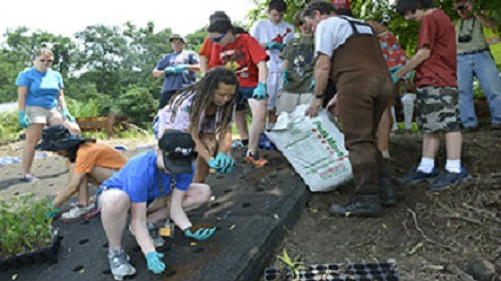Baltimore Recognized for Environmental Successes

The Helen Delich Bentley Port of Baltimore has been named a “Green Supply Chain Partner” by Inbound Logistics magazine for its environmental efforts, specifically the Port’s dray truck replacement program. The recognition came as the Maryland Department of Transportation Maryland Port Administration’s (MDOT MPA) Environmental Management System was recently recertified under the International Organization for Standardization’s new Environmental Management standard, which now focuses more on leadership, proactive initiatives to protect the environment, and communications strategy. MDOT MPA manages the six public marine terminals at the Port of Baltimore.
“The Port of Baltimore continues to break records while striving to reach the highest environmental standards,” said Governor Larry Hogan. “The Port has successfully balanced moving our state’s economy forward while protecting our natural resources and improving the health of the Chesapeake Bay.”
Under a Diesel Emissions Reduction Act (DERA) grant through the U.S. Department of the Environment, more than 170 older dray trucks that move cargo at the Port of Baltimore have been replaced in recent months with newer clean diesel dray trucks. These upgrades improve overall fuel efficiency and reduce harmful pollutants.
The DERA grant also funds exhaust system upgrades or diesel engine replacements on up to 26 pieces of cargo-handling equipment, such as forklifts and yard tractors. Automatic stop-start anti-idling devices are being installed on locomotives to move rail cars that come through the Port.
MDOT MPA has shown a commitment to the environment over the years on numerous projects. As part of the Dredge Material Management Program, MDOT MPA uses sediment dredged from the shipping channels that lead to the Port of Baltimore to restore wetlands and eroding islands, including Maryland’s Poplar and Hart-Miller islands.
Poplar Island, in the mid-Chesapeake Bay off Talbot County, has been rebuilt to its original 1,150 acres using dredged material. It is today home to a variety of wildlife and waterfowl. Hart-Miller Island, in the upper Chesapeake Bay near the mouth of Back River in Baltimore County, has been rebuilt and is a popular recreation site for boaters. Poplar also is an important nesting ground for terrapins. Poplar Island, Hart-Miller Island, and the Swan Creek wetlands (near the Cox Creek dredged material placement site) offer critical habitat for migratory birds. Both Poplar and Hart-Miller are listed as important Bird Areas by the National Audubon Society.
At Masonville Cove, on the Patapsco River in Baltimore, MDOT MPA cleaned and restored a shoreline that was severely polluted by decades of industrial activity. It removed 27 abandoned vessels and over 61,000 tons of trash. Today, trails through the Masonville wetlands draw a steady flow of visitors who come to observe the many species of birds and waterfowl that gather there. The Masonville Cove Environmental Education Center opened in 2009 and has about 2,000 students a year participate in its hands-on programs. In 2013, the US Fish and Wildlife Service named Masonville Cove its first Urban Wildlife Refuge Partner.
MDOT MPA also works with the Maryland Department of Natural Resources to restore the bay’s depleted stock of native oysters. MDOT MPA provided funding to lay crushed stone on top of the Patapsco’s riverbed last year between Fort Carroll and the Key Bridge. This initiative allowed oysters to filter pollutants from the river and create food and habitat for other creatures.
Additionally, the MDOT MPA recently announced they will be the first North American port to host the GreenPort Congress in May 2018. The GreenPort Congress is an international conference that brings together maritime professionals from around the world to discuss environmental initiatives and developments.
Business at the Port of Baltimore generates about 13,650 direct jobs, while more than 127,000 jobs in Maryland are linked to port activities. The Port is responsible for nearly $3 billion in individual wages and salary and more than $310 million in state and local tax revenues.
The Port of Baltimore was recently named the fourth fastest-growing port in North America. It also was recognized as the most efficient container port in the U.S. for the third consecutive time. The Port has repeatedly set monthly cargo records in 2017. Last year, the Port’s public marine terminals surpassed 10 million tons of general cargo for the first time and handled a record number of containers.
Combining both the public and private marine terminals, the Port of Baltimore saw 31 million tons of international cargo valued at approximately $49 billion cross its docks last year. Baltimore is ranked as the top port among all U.S. ports for handling autos and light trucks, farm and construction machinery, and imported sugar. Overall, Baltimore is ranked ninth for the total dollar value of cargo and 14th for cargo tonnage for all U.S. ports.
The products and services herein described in this press release are not endorsed by The Maritime Executive.
